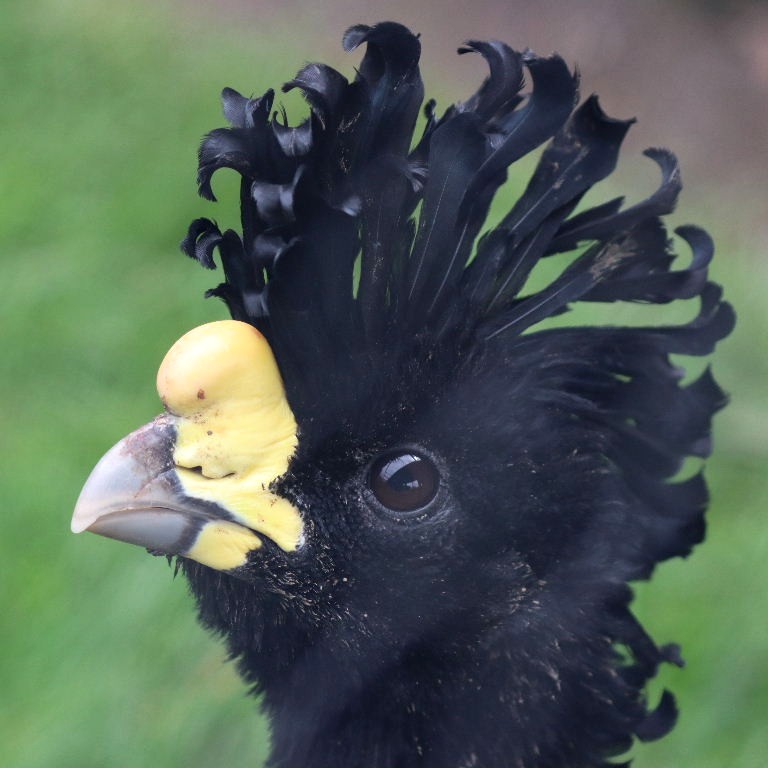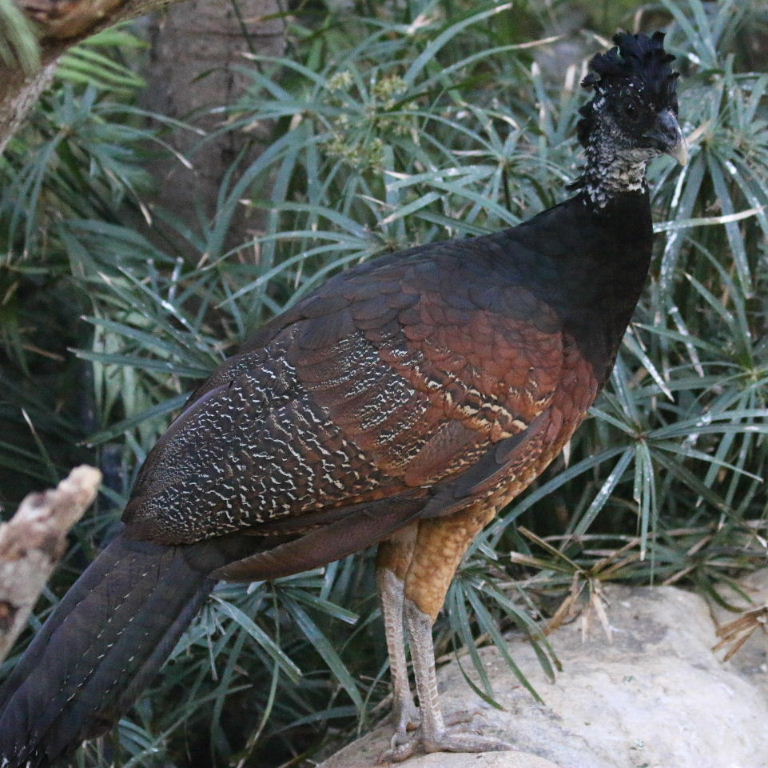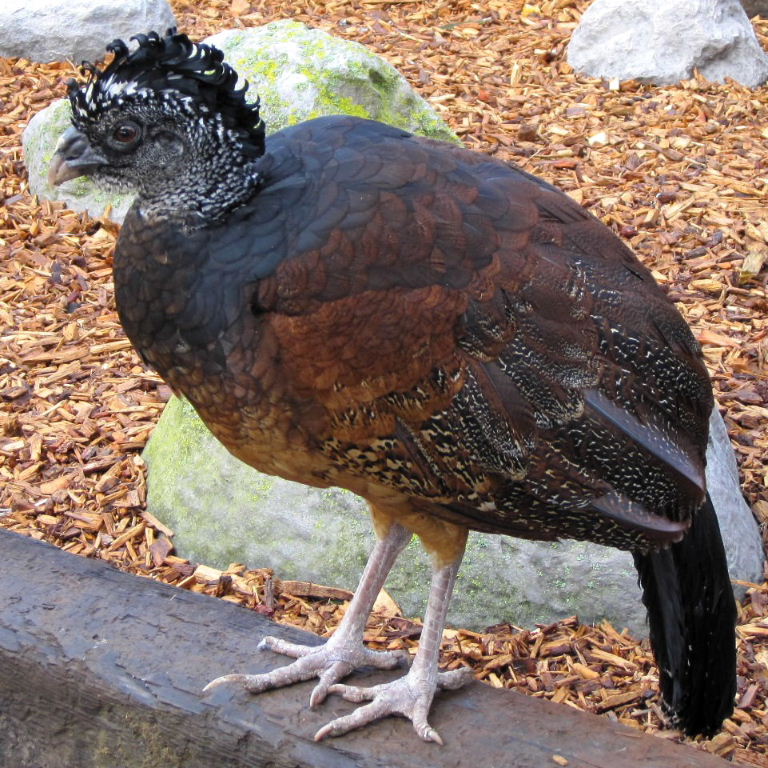Great Curassow Crax rubra


The Great Curassow is a about the size of a heavy pheasant, to which curassows are related. They spend more time in trees than pheasants do.
As its name indicates, it is the largest curassow.



They are native to eastern Mexico through to north-eastern South America, the only species of curassow with a native range outside of South America.



The male (above) is superficially similar to the Bare-faced Curassow, with black plumage,
a curly crest, a bright yellow patch on the base of the beak and a white underbelly.
Unlike the Bare-faced, there are more feathers around the eye, the end of the beak is light horn-coloured and he has a knob on the top of the beak.



There are three main forms of female plumage: a plain, bright rufous brown body with dark, mottled head and barred tail; a
darker brown (above) with black, mottled head, black neck, upper back and tail with white, mottled barring on the wings
and an intermediate between the two. Females don't have the bright yellow on the beak.



They live in tropical rainforest, usually in small flocks in monogamous pairings.



The diet is mostly fallen fruit but can include crawling insects and small rodents.







